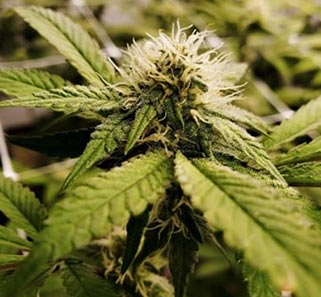Michigan’s Cannabis Market: How it Started and Where it’s Going

After Michigan voters passed the Medical Marijuana Facilities Licensing Act, people expected a robust market to follow. In July 2018 LARA issued the first commercial medical marijuana license in the state, followed by the first recreational license 18 months later. Michigan’s regulated market is now four years old and is experiencing the growing stumbles that a four-year-old child demonstrates.
Similar to the states that regulated marijuana earlier, Michigan sees dramatic shifts in the legal market. Below is a look at how it started, where we are, and a possibility of what the future might look like.
Price Compression
The Michigan Cannabis Regulatory Agency (CRA) publishes a monthly sales report available to the public on its website (1). Reviewing the monthly reports reveals the average retail price of an ounce of cannabis for July 2022 was $121, and for medical, it was $110. July 2021 saw retail prices nearly 45% higher or $218 per ounce. Two years ago, July 2020 had an average retail price of $402 and $267 for medical. So what caused the change?
Supply vs. Demand
Plant counts and the potential flower supply grew by five times in two years. Looking back to July 2020, calculated by combining the total cultivation licenses issued for both medical and recreational by CRA, the maximum amount of plants that could be legally grown was 500,000. Two years later the number of plants sits at 2.5 million.
Breaking down the 2020 numbers further shows that medical cultivation was almost twice that of the adult use (medical=330,500, adult use=169,500). By July 2022 adult use cultivation flipped the script on medical cultivation (1,500,000 to 990,000).
Using industry standards, a cultivation license averages four harvest cycles annually (indoor growth) and four ounces of market-ready flower per harvested plant, the maximum semi-annual yield was 1,250,000 pounds using July 2022 information.
CRA sales reports for the first half of 2022, including medical and adult use sales, were just under 224,000 pounds. So the issue is the potential supply (1,250,000 pounds) is five and half times the current sales (224,000 pounds). Granted, these numbers only take into account flower product and sales. Viewing the same CRA numbers shows other forms of cannabis have increased in sales; however, these additional sales do not put a severe dent in the potential supply.
The Black Market
Michigan still has an active and vibrant unlicensed market. The numbers are anecdotal, but it’s generally agreed upon that at least some meaningful percentage of Michigan products (including flower and other categories) are produced by unlicensed cultivators/processors or are illegally imported to Michigan from Canada or states with overproduction (Washington, Oregon, and California).
CRA has issued nearly 3,000 licenses, and almost all of those licensees work diligently to stay in compliance with CRA regulations, which do not allow for the purchase and sale of cannabis that hasn’t gone through the testing process and other Metric tracking required by CRA regulations. The start-up costs associated with each license are incentive enough to follow the rules. Still, as margins shrink and cash flow dries up, some licensees may be enticed to engage with unregulated cannabis.
Consumer Sentiment
The pains of Michigan’s cannabis industry can be attributed to the massive growth of the sector, and the government’s (CRA and legislature) reaction. The industry has outpaced the government’s ability to test and maintain regulations. Consumers don’t trust the accuracy of product labels, particularly THC content, which makes them question the state testing laboratories’ integrity and Michigan’s regulator’s motives. Part of the push to legalize cannabis in Michigan was to promise to increase the reliability and safety of cannabis and cannabis products.

If the public loses faith in the government’s ability to regulate a safe product, the legal cannabis market is viewed as the same as the Black Market. Once that happens, the price of cannabis becomes the only value for consumers. Unlicensed operators have lower overhead and can offer cannabis at a lower price, still making a good profit. The Black Market drives the licensed market price. One way to mitigate the Black Market’s influence is to regain the public’s trust in the testing process. The sooner this happens, the better it will be for everyone.
Silver Linings
There are still several pieces of positive news. Michigan isn’t the first state to go through this, and they can look to other states to learn how to come through this moment stronger. Additionally, the legal cannabis market in Michigan saw sales in excess of $1 billion for just the first six months of 2022. It is safe to assume consumer demand will continue pushing legal cannabis sales to over $2.1 billion this year. This industry didn’t exist four years ago. Despite all the stresses the industry is experiencing currently, these sales numbers indicate the market has staying power.
Beyond Michigan’s borders, there is a push for the legalization of cannabis at the federal level. Currently, 19 states have adult-use laws, while 39 have legalized cannabis for medical use. Federal approval doesn’t seem like it will happen this year, but there is momentum to normalize the sector by removing obstacles for cannabis businesses to operate as other sectors utilize. It is now viewed as “if,” rather than “when” regarding federal legalization, which is a positive for states like Michigan, where the sector is already established.
Where Do We Go from Here
Michigan will see contraction and consolidation of licensed operators as the price continues to fall. The state will need to balance the homegrown businesses against the deep pockets of multi-state operators. The industry is reliant on how the legislature reacts to these changes.
If CRA aggressively works to gain trust in the testing process, it will help grow the legal side of the market. The Black Market will not disappear, but things can be done through legislation to discourage the practice.
Continued retail growth is bound to occur as more municipalities loosen their hold on licenses. The number of cities, villages, and townships increased by 5% for medical, and 15% for adult use over the last year. In 2022 the excise tax was $160 million, some of which goes directly to jurisdictions that opted into the program. Perhaps this will incentivize more municipalities to grab a bit of the cash.

Michigan has proven the doubters wrong. In under five years, the licensed cannabis industry has planted roots and is growing strong. Sure, it hasn’t been as smooth as predicted, but the issues are easily fixed. Michigan is firmly positioned to be a leader once the federal government makes the necessary changes to cannabis laws. The states that neighbor Michigan will turn to us to learn how to build a cannabis industry that flourishes and is safe. We should be proud of how far we have come in such a short time and excited about the future.



